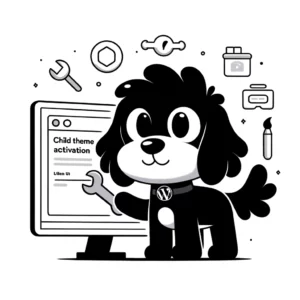Understanding Widget Areas in WordPress Themes
In WordPress themes, widget areas are essential for adding and managing dynamic content and features throughout a site. They provide a flexible way to enhance website functionality without the need for direct code edits.
Fundamentals of Widget Areas
Widget areas are defined within a WordPress theme’s structure, typically in files such as functions.php or similar template files. These areas act as a placeholder for widgets, which are individual blocks of content that can be added, arranged, and removed from the WordPress admin area. Common locations for widget areas include the sidebar, footer, and sometimes the header of a WordPress site.
Themes can declare support for widget areas in their functions file by using the register_sidebar() function. Multiple widget areas can be registered and styled with CSS to match the theme’s appearance. It is the combination of PHP and CSS styles that defines how widget areas are structured and displayed on the front end.
Widget Functionality and Usage
Widgets offer various features to WordPress sites, such as navigation menus, search bars, or custom text. Basic widgets are often included in WordPress by default, but themes and plugins can provide additional widgets. When users update their themes or add new features, they can leverage these widget areas to place content anywhere the theme permits.
Widgets can be easily added to registered widget areas through the WordPress dashboard by dragging and dropping them into place. Not only do they enhance the site’s functionality, but they can also be updated with custom CSS to tailor their look and feel. This allows users to create a consistent aesthetic across the site while updating content through an intuitive interface.
Managing Widgets and Widget Areas
Managing widgets and widget areas is crucial for customizing the appearance and functionality of a WordPress site. This section of the article delves into the essential tools and techniques WordPress users can employ to elevate their website’s design and user experience.
Customization and Management Tools
WordPress provides a variety of tools for customizing and managing widgets and widget areas. Users can leverage the WordPress Customizer, accessible via Appearance > Customize, to add and arrange widgets in their theme. The Customizer offers a live preview, making it easier to see the changes in real-time. When working with widgets, one may also encounter the Gutenberg editor, which introduces blocks as a new way of building content. Blocks can be used as widgets within widget areas, enabling a versatile and responsive design.
With recent WordPress versions, themes have increasingly embraced blocks in widget areas. To enable block-based widget areas, themes must include the add_theme_support( 'widgets-block-editor' ); function in their functions.php file. This allows for a more seamless integration between widgets and the block editor, leading to more consistent and dynamic layouts across the entirety of the theme.
Advanced Widget Area Techniques
Utilizing advanced techniques can significantly enhance widget areas. For theme developers and those comfortable with coding, custom widget areas can be created by editing the theme’s functions.php file or using a child theme to avoid losing changes on theme updates.
Once a custom widget area is declared, it can be displayed in a theme’s template parts using the dynamic_sidebar() function. Furthermore, theme options panels and shortcodes can provide additional customization and flexibility for widgets, while CSS and PHP edits create tailored appearances and functionalities.
For sites requiring even more advanced customizations, plugins offer a way to extend widget functionalities without direct coding. Moreover, accessing the site via FTP and directly editing theme files can be a method for implementing complex changes, although this approach should be reserved for skilled developers.
It is important to always ensure that any customization is responsive and adapts to different screen sizes, providing an optimal user experience. When enhancing widget areas, one should also remember to manage updates carefully, keeping both the WordPress core, themes, and plugins up to date to maintain a secure and stable website environment.
Theme Development and Widget Integration
Integrating widgets effectively into a theme requires understanding the technical aspects of WordPress and its theming system. Developers should focus on incorporating widget areas that offer flexibility and enhance the site’s functionality.
Creating and Enhancing Widget Areas
In the realm of theme development, the creation of widget areas is integral to offering a customizable user experience. Widget areas are typically defined within the theme’s PHP files using the register_sidebar() function and related parameters to set up taxonomy terms, descriptions, and CSS classes. For instance, a theme for a magazine site might include several widget areas: one for the sidebar on category pages, another for the footer on posts, and a third for a special template part on custom post types.
Developers should employ WordPress admin area tools and functions like dynamic_sidebar() to display widget areas depending on the template hierarchy. Incorporating shortcode support within widgets allows for additional functionality from third-party websites or plugins. To enable widget features, add_theme_support('widgets') should be included within the theme’s functions.php file.
Best Practices for Developers
When developing a theme, following best practices is crucial for long-term maintenance and user satisfaction. Developers should adhere to WordPress coding standards to ensure compatibility and ease of use. To this end, separating the widgets code from other theme functions can be beneficial. CSS should be used wisely to style and visually distinguish widget areas on both the front end and within the WordPress admin area.
Careful consideration of the template and headers ensures that the widget areas are accessible and hierarchy compliant. Furthermore, using hooks and filters, developers can add or modify widget areas without altering the core files. This kind of abstraction allows for greater flexibility and a modular approach to theme development.
Understanding and applying these techniques enables developers to build themes that not only look good but are also functionally rich and highly customizable.













